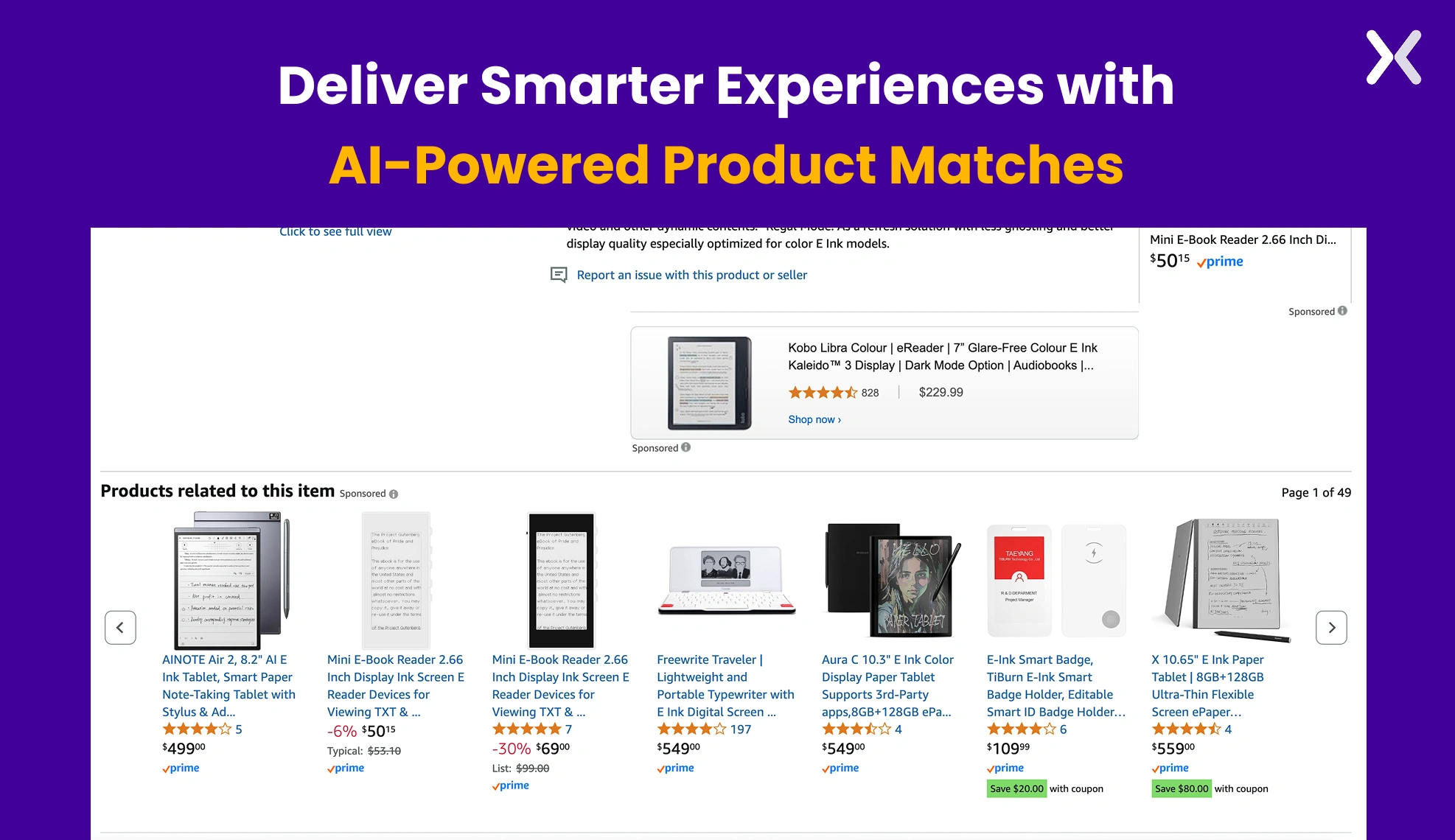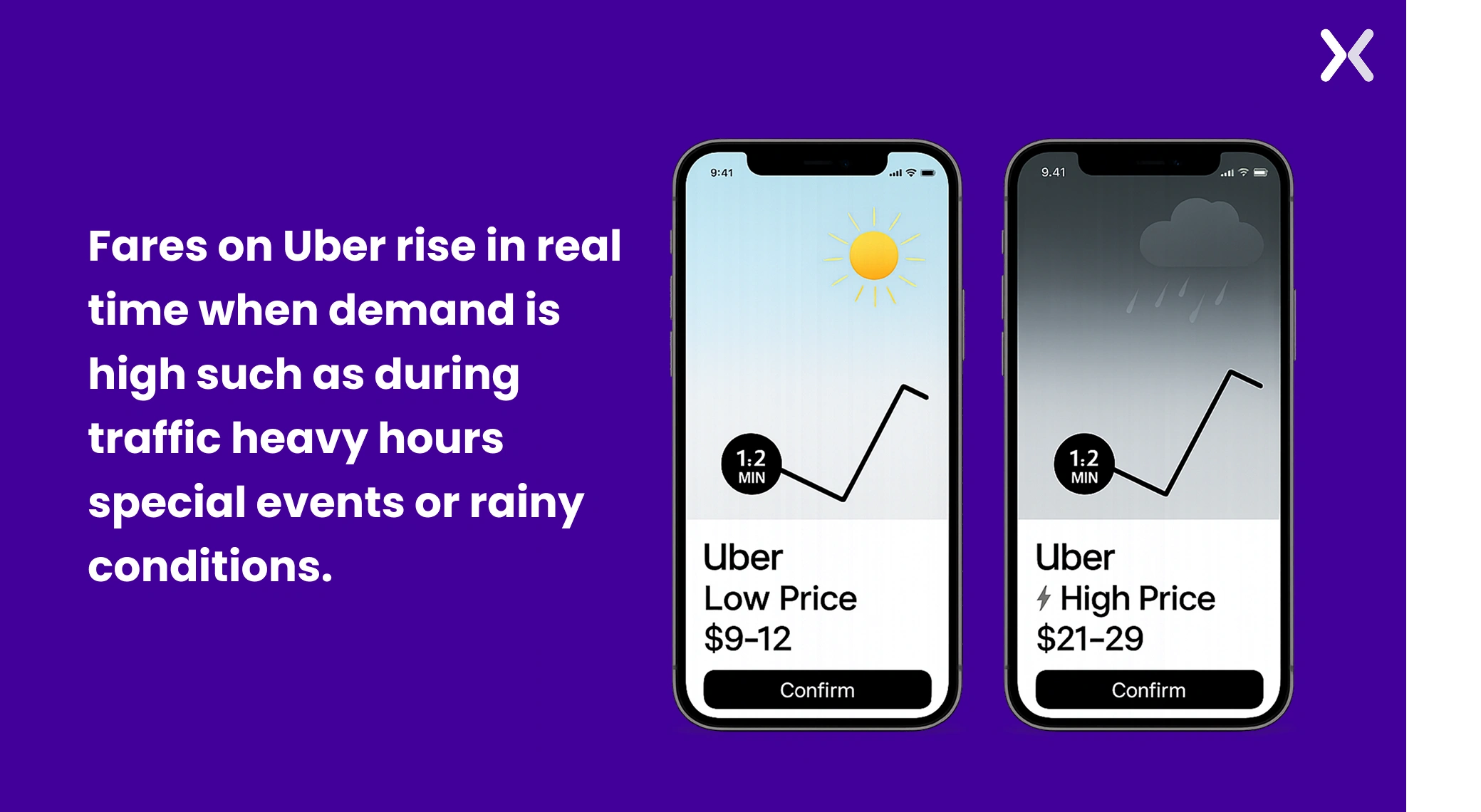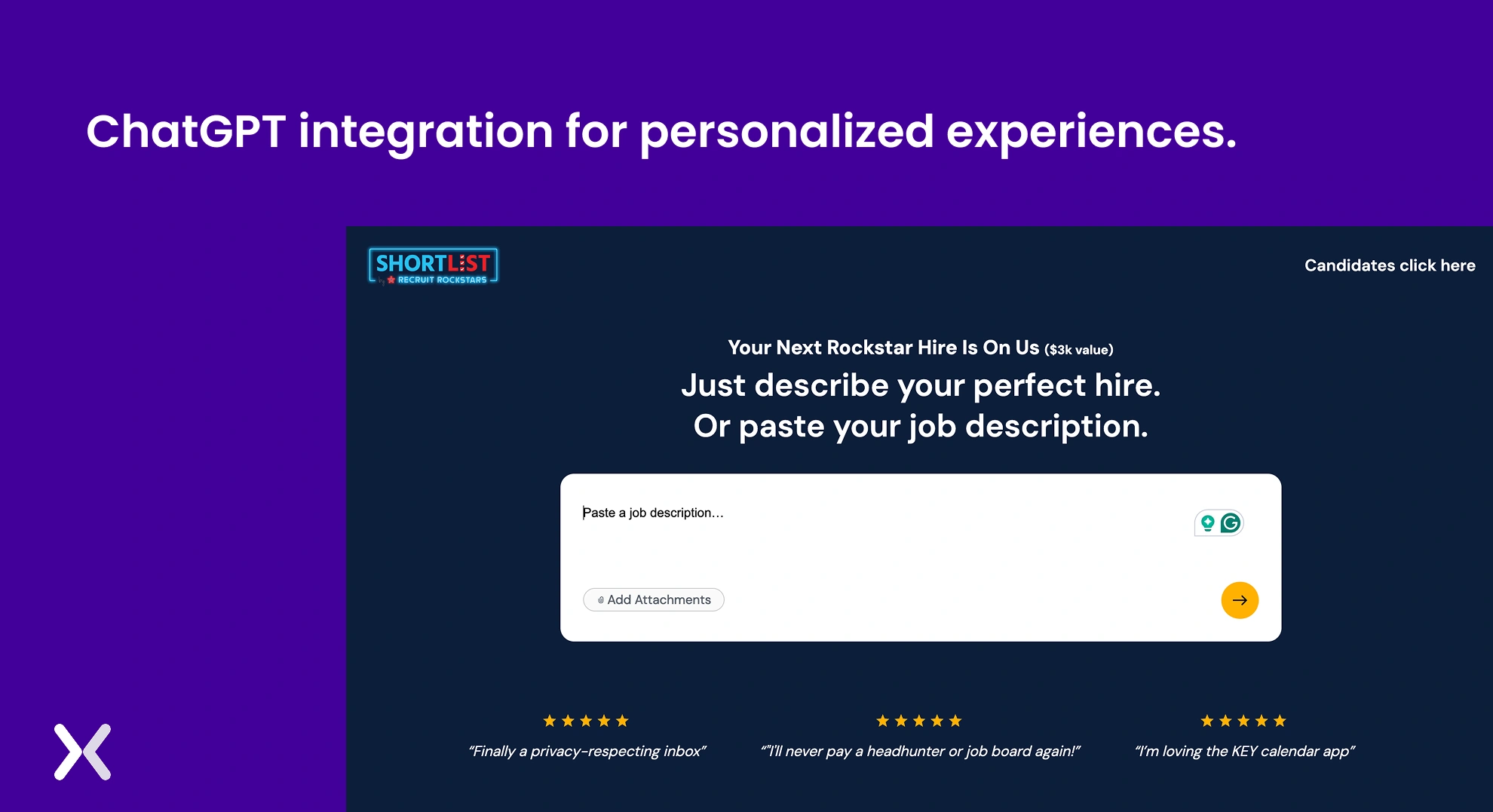Artificial intelligence is transforming the way websites appear and function. Today, many people are curious about how to integrate AI in website design, especially as AI tools become easier to access and use. For those new to this topic, it can be helpful to start with the basics.
Understanding what AI means in the context of websites will make it easier to explore available options. This article explains the fundamentals of AI integration in website design and outlines the different ways it can be implemented.
AI integration in website design means adding smart tools that can learn and make decisions on their own. Think of it like having a helpful assistant built into your website that never sleeps.
There are three main ways to add AI to your website:
AI website builders: These create your entire site using artificial intelligence.
Pre-built AI tools: Ready-made features you can plug into your existing site.
Custom AI solutions: Specially designed tools built just for your specific needs.
Most website owners start with pre-built tools because they’re easier to set up and don’t require technical skills.
AI makes websites smarter by learning what each visitor likes. When someone visits your site, AI can show them content that matches their interests based on what they click and how long they stay on different pages.
Personalized experiences: AI tracks visitor behavior and adjusts content in real-time to match individual preferences.
24/7 customer support: AI chatbots answer questions instantly, even when your team is offline.
Better engagement: Smart recommendations keep visitors on your site longer by suggesting relevant content or products.
Automated tasks: AI handles repetitive work like resizing images or writing product descriptions, saving you time.
These features work together to create websites that feel more helpful and responsive to each visitor’s needs.
Not every website needs the same AI features. Your choice depends on what you want your site to accomplish and who visits it.
AI recommendation engines study what visitors look at and suggest similar items they might like. These systems compare one visitor’s behavior to others with similar interests.
E-commerce sites use this to show “customers who bought this also bought” sections. Content websites use it to suggest related articles or videos.

AI chatbots handle common questions without human help. They can guide visitors through processes step-by-step or connect them to the right person when needed.
Modern chatbots understand natural language, so visitors can ask questions the way they normally speak rather than using specific keywords.
AI groups visitors based on their behavior and shows different prices or promotions to each group. A visitor who looks at a product multiple times might see a discount, while a first-time visitor sees a welcome offer.
For example, Uber uses surge pricing, a form of dynamic pricing. During periods of high demand, such as rush hour, special events, or bad weather, fares automatically increase. You can see this in real time by comparing ride costs in busy areas with those in less congested ones.

Predictive search helps visitors find what they want faster by suggesting search terms as they type. AI can also reorganize navigation menus based on what’s most popular with your visitors.
AI can write product descriptions, generate image alt text for accessibility, or create social media posts. It can also refresh existing content with updated keywords or suggest better headlines. These tools help keep your site active and relevant without adding extra workload.
As part of building Recruit Rockstars’ new Webflow website, we integrated a ChatGPT-powered assistant to enhance user experience.

The AI helps visitors articulate their hiring needs, directs them to the most relevant next step—such as submitting a job description, booking a call, or exploring resources—and captures structured details for the team. This seamless interaction reduces friction, strengthens engagement, and results in more qualified leads.

Most websites can add AI features using existing tools rather than building everything from scratch. This approach is faster and more affordable for most businesses.
Popular website platforms offer AI plugins that install with a few clicks:
WordPress: Options like WP Chatbot, AI Engine, and Formidable Forms’ AI Field let you add chat support, content generation, and smarter form responses.
Shopify: Tools such as Shopify Inbox and Tidio AI Chatbot help with customer support, product recommendations, and boosting sales conversions.
Wix: Wix ADI (Artificial Design Intelligence) can build page layouts, suggest design elements, and personalize content for each visitor.
Squarespace: Built-in AI features assist with content creation, layout suggestions, and SEO improvements to keep sites looking professional.
After installation, these plugins provide setup wizards that guide you through configuration without requiring coding knowledge.
Services like OpenAI, Google Cloud AI, and AWS provide APIs that connect your website to advanced AI systems without needing heavy infrastructure or complex setups.
By obtaining an API key, you can easily add features like natural language processing, image recognition, voice assistance, or automatic translations directly into your site’s workflows.
These APIs allow developers to scale AI capabilities as needed, ensuring websites can deliver personalized experiences, automate content creation, or improve search and recommendations in real time. This approach offers flexibility and power, but requires some coding knowledge compared to simpler plugins or no-code solutions.
Tools like Zapier link websites to AI application through visual workflows, allowing you to create automations that trigger AI actions whenever specific events occur online.
For example, you can automatically generate personalized emails, summarize new blog posts, or analyze form submissions with minimal setup and no direct coding requirements. Platforms like Chatbase let you train AI chatbots by uploading documents or web pages, then generate embed code for instant website integration.
Adding AI to your website works best when you follow a structured approach. Each step builds on the previous one to create a reliable system.
Write down exactly what you want AI to accomplish. Examples include increasing sales by 15%, reducing support tickets by 30%, or improving time spent on site. Choose specific metrics you can measure, like conversion rate, average session duration, or number of chat interactions.
Decide between AI website builders, pre-built tools, or custom development based on your technical resources and requirements.
AI website builders: Best for new sites that want AI features from the start
Pre-built tools: Perfect for adding AI to existing sites quickly
Custom development: Necessary for unique requirements or large-scale implementations
AI tools need clean, organized data to work properly. Connect your product catalog, customer database, or content management system to the AI service. For chatbots, gather frequently asked questions and their answers. For recommendation engines, ensure your product data includes categories, descriptions, and customer behavior tracking.
For plugins, use your CMS’s installation process and follow the setup wizard. For APIs, add the provided code to your website and configure settings like response formats and rate limits. Test the integration on a staging site before making it live to catch any conflicts with existing features.
Run A/B tests to compare your site with and without AI features. Monitor key metrics and user feedback to identify any issues. Launch gradually, starting with a small percentage of visitors, then expanding as you confirm everything works correctly.
Successful AI implementation requires ongoing attention and optimization. These practices help maintain performance and user satisfaction.
Start with one or two carefully chosen AI features instead of overwhelming your website with too many tools. This makes your integration easier to track and evaluate effectively.
Adding features gradually helps you measure results and identify which tools provide the most value. A phased approach also reduces troubleshooting complexity and prevents unnecessary performance issues.
Focusing on a smaller scope ensures your visitors enjoy improvements rather than being confused by sudden, sweeping changes. Over time, you can expand AI capabilities based on proven benefits.
AI features often rely on external scripts or data processing, which can affect website loading speed if not optimized properly. Slow sites risk losing visitors and conversions quickly.
Always test your website’s performance after integrating AI tools by using resources like Google PageSpeed Insights or GTmetrix. These highlight potential delays caused by new scripts or widgets.
To minimize disruption, configure AI scripts to load asynchronously so essential content appears first. This ensures visitors have a smooth experience while AI functions work efficiently in the background.
AI systems are only as reliable as the data they use, meaning inaccurate or outdated information can cause poor recommendations or irrelevant chatbot responses that frustrate users.
Regularly audit and clean your data sources, including product catalogs, customer profiles, and content libraries. Structured, updated data helps AI models provide more accurate insights and useful outputs.
Schedule routine checks for duplicate entries, missing details, or outdated information. High-quality data not only improves AI performance but also builds visitor trust through consistent, relevant user experiences.
AI features frequently collect user interactions, browsing history, or purchase data to deliver personalization. This makes transparency and compliance essential for protecting visitor trust and meeting legal requirements.
Ensure your privacy policy clearly explains what information is collected, how it’s stored, and whether it’s shared with third-party AI providers or integrated platforms. Transparency reassures users greatly.
Implement consent mechanisms, such as cookie banners or opt-in forms, especially if you operate under GDPR or CCPA. Strong privacy practices safeguard your reputation while allowing AI to function responsibly.
Avoid these frequent problems that can hurt your website’s performance or user experience.
AI features can slow down your website if not implemented carefully. Always test loading times after adding new AI tools and optimize scripts to load asynchronously when possible.
Too much personalization can make visitors uncomfortable. Limit how much content changes based on user behavior, especially for new visitors who haven’t established clear preferences yet.
Ensure AI features work properly on smartphones and tablets. Test chatbots, recommendation widgets, and other AI tools across different screen sizes.
AI tools that don’t protect user data properly can create legal problems and damage trust. Implement proper security measures and follow data protection regulations like GDPR.
Integrating AI into website design offers powerful ways to improve user experience and drive website conversions. The key is starting with clear goals and choosing the right approach for your technical resources and business needs.
By implementing AI gradually, maintaining data quality, and respecting user privacy, you can create smarter websites that adapt to visitor behavior. Over time, these enhancements not only boost engagement and sales but also position your brand as forward-thinking and customer-focused. With the right strategy, AI becomes less of a trend and more of a long-term growth driver for your online presence.
Related Articles:
Drive More Sales or Leads With Conversion-Focused Websites and Landing Pages
Get Started
In today’s fast-paced digital world, having a responsive website is no longer just a nice-to-have, it’s essential. Whether...
As artificial intelligence continues to evolve, businesses are finding innovative ways to enhance their marketing efforts. One of...
Get quality posts covering insights into Conversion Rate Optimisation, Landing Pages and great design